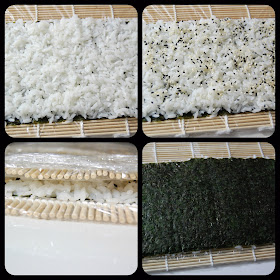I
decided to make a short video to celebrate all the wonderful things
that happened in 2013. It certainly was an eventful year and I want to
say a big THANK YOU to all my followers for your support. I love getting
your emails, messages, comments and especially photos of my recipes
that you tried at home. Fiona's Japanese Cooking blog is about
bringing Japanese food into your kitchens and creating easy to follow
recipes that you will try at home. I'd love to see more and more people
trying Japanese cooking at home in 2014.
- Winning the Easy Food Home-Cook Hero Awards 2013 (cáca milis category) with my pandan roulade recipe. When I spoke to Catherine Fulvio she said that I brought a new Asian ingredient to the competition and that’s what made me stand out. The Awards were aired on TV3 in November 2013 and my recipe was published in the Jan/Feb 2014 Easy Food Magazine
- My recipe will be featured in Powercourt 5 star hotel in Co Wicklow in early 2014.
- Opening the main stage of one of Ireland’s leading food festivals, Savour Kilkenny with a Japanese cooking demonstration. It felt amazing to see how intrigued the audience of 200 people were to learn about Japanese cooking. It was an honour to be included in the same line-up as Edward Hayden and Kevin Dundon.
- Moving my Japanese cooking classes from my home in Kildare to Miele Gallery in Citywest, Dublin. Thanks to all my food blogging friends for attending my cooking classes at my house in 2013.
- Meeting John and Sally McKenna and being interviewed with them on the Sue Nunn show on KCLR 96FM.
- Being interviewed by Fiona Dillon on Kilkenny radio and bringing my story and Japanese food into households around Kilkenny.
- Spending time in the Wagamama kitchen with head chef Juan Manteca and in the kitchen of Raw Sushi in the Sky (Radisson hotel in Galway) with head chef Hisashi Kumagai.
- Fiona's Japanese Cooking blog being shortlisted for the Irish Blog Awards 2013 in the food category (www.fionasjapanesecooking.blogspot.ie).
- My audience/ followers growing from my circle of family and friends to people around the world.
Happy New Year and wishing you health and happiness in 2014. Fiona Uyema x
Happy New Year and wishing you health and happiness in 2014. Fiona Uyema x


















.jpg)






























